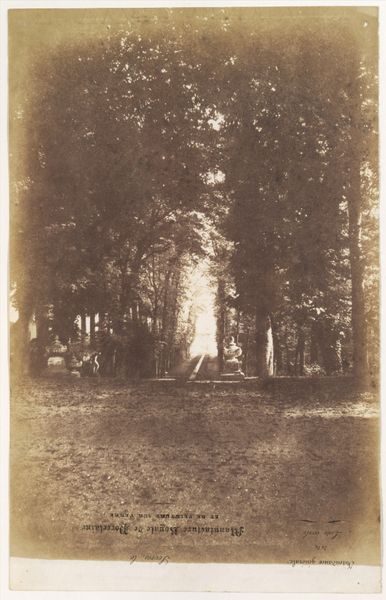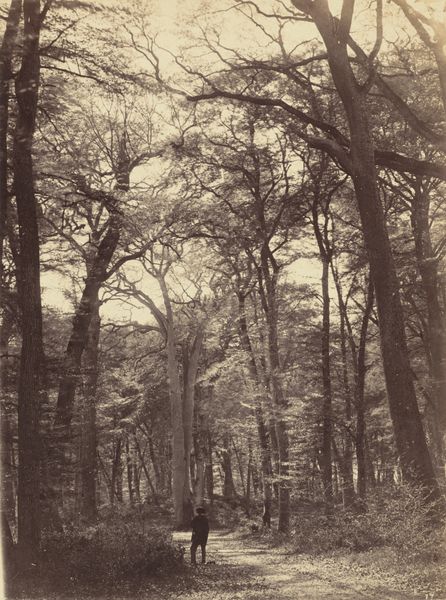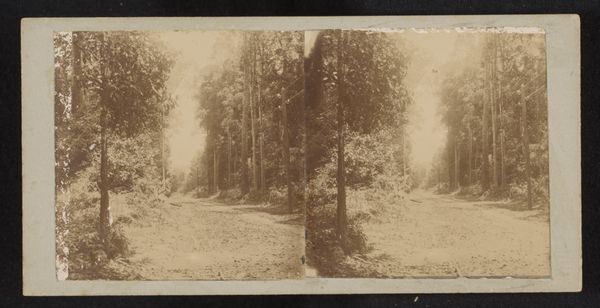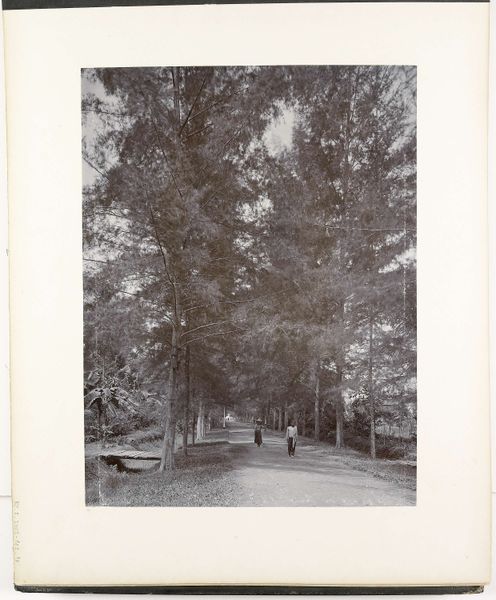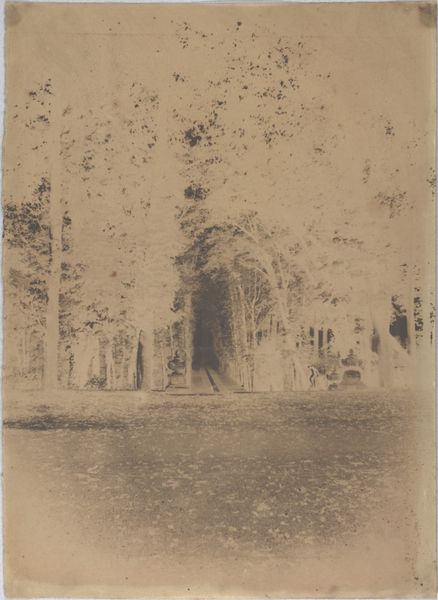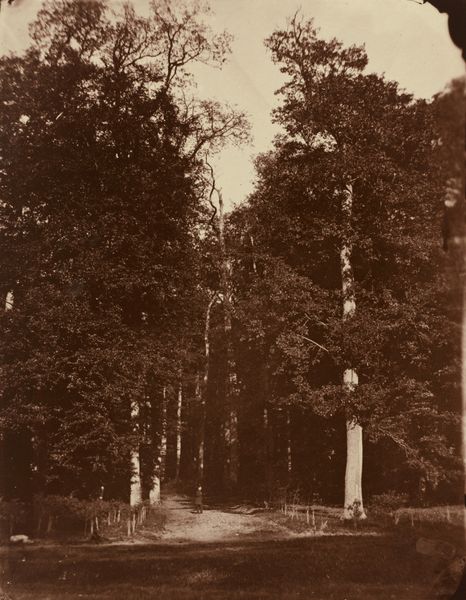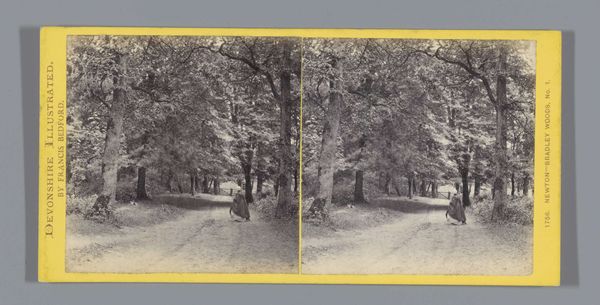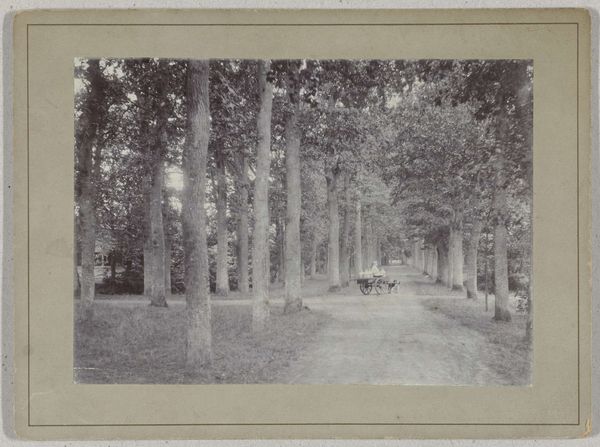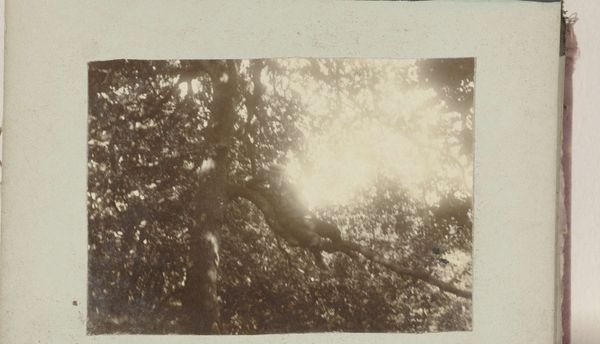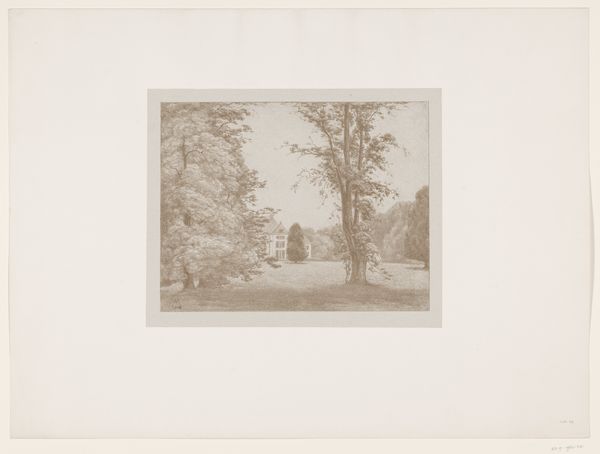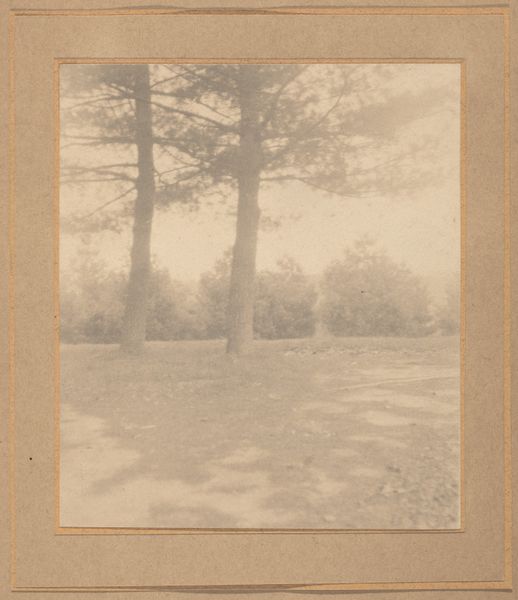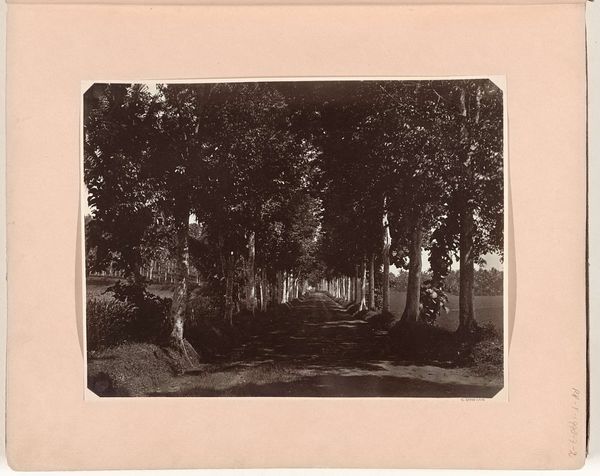
Dimensions: height 175 mm, width 99 mm
Copyright: Rijks Museum: Open Domain
Editor: Okay, so this is “Grave of ‘H.H.’ on Cheyenne Mountain in Colorado” by William Henry Jackson. It's a gelatin silver print, dating somewhere between 1860 and 1900. It's striking how this image, taken so long ago, still makes me feel a sense of quiet contemplation. What’s your initial reaction? Art Historian: It certainly evokes a specific historical context. This image, made during a period of westward expansion in America, presents a romanticized view of the landscape while subtly referencing themes of mortality and memory. The question becomes, how does the representation of this grave serve the photographer’s agenda, and for whom was this image intended? Editor: Agenda? It just seems like a photo of a grave in the mountains. What political undercurrents am I missing? Art Historian: Well, consider the prevailing attitude towards the American West at the time. Jackson’s photographs, often commissioned by railroad companies or the government, helped to shape a specific narrative: one of untamed wilderness ready for "civilization." Doesn't the carefully constructed, almost picturesque presentation of the grave, situated within a 'wild' landscape, somehow 'tame' this sense of loss and lay claim on territory? Editor: I see your point, it's not just a snapshot. The choice of composition is deliberate, using romanticism to create a certain emotion for the landscape. Art Historian: Precisely. It is critical to examine how images like these, which circulated widely, participated in the construction of national identity and the justification of westward expansion. Even the act of documenting a grave, naming it in the title, establishes a connection and asserts a sense of ownership of that past. Who exactly, was "H.H.”, and what does that signify? Editor: That makes me wonder what Jackson hoped people would take away from seeing this. So, by appreciating its aesthetic appeal, are we unknowingly internalizing these colonialist viewpoints? Art Historian: It's a critical question. Art never exists in a vacuum. Understanding the social, cultural, and institutional forces that shaped its creation allows us to engage with it more critically. Editor: Wow, I will never see landscape photos the same way again. Thanks.
Comments
No comments
Be the first to comment and join the conversation on the ultimate creative platform.
